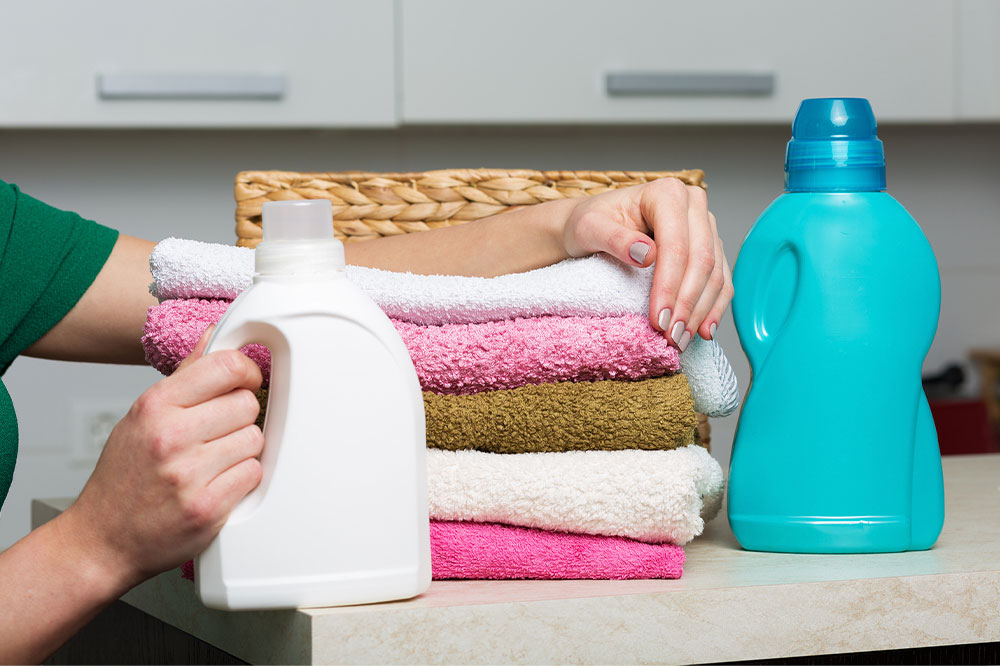6 common laundry mistakes to avoid

One of the most basic rules of doing laundry is to put whites and colors in separate loads. But there is more to laundry than just picking clothes based on their color. Sometimes one can make certain mistakes that can damage the clothes and cost them a lot of money. Hence, here are some common laundry mistakes that can lead to damaged clothes, followed by tips on how one can avoid them.
Using more laundry detergent than necessary
Usually, people believe that adding more laundry detergent equals cleaner clothes. But this is far from the truth. In most cases, adding extra laundry detergent can lead to the development of extra suds that can remain on the clothes after the wash. So, when one wears these clothes, the sticky suds layer on the clothes can attract more dust and bacteria, affecting the quality of the clothes and compromising one’s immune system. Hence, its imperative to use the recommended quantity of detergent according to the laundry load.
Not sorting the load by material
One of the most common laundry mistakes that can damage clothes is not sorting them based on their material. While putting white, light-colored, and dark clothes in separate loads can prove beneficial, segregating these clothes based on their fabric material can prevent damage and abrasion. For instance, if one puts heavy material clothes such as denim with delicate fabrics like chiffon, linen, and silk, the delicate ones can likely tear or become prone to permanent damage.
Additionally, this grouping of clothes can be beneficial for the drying process, as all the clothes will dry faster compared to heavier fabrics.
Letting the loads linger in the washer
Another common laundry mistake is leaving the load in the washer and forgetting about it. While this can seem harmless, this damp load can act as a breeding ground for mold. One of the easiest ways to identify this is to look out for a musty smell from the clothes. Although high-fragrance laundry detergents can sometimes make it difficult to recognize the foul smell, it’s extremely important to remove the load from the washer as soon as the cycle is complete.
Overloading the washer
When loading the washer, the smaller the load, the better. This is because overloading the washer tub makes the penetration of laundry detergent difficult across all pieces of clothing. This means sweat, bacteria, and stains will remain on the cloth after the wash cycle, thus affecting the quality of the clothes. So, always do smaller loads and avoid compressing the clothes to fit into the machine. Also, read the manual to check for the mentioned load number.
Not preparing the clothes properly before washing
A lesser-known but widely committed laundry mistake is leaving zippers and buttons open. In most cases, when one commits this mistake, the clothes become more susceptible to rips and small holes while tossed around during the wash cycle, especially jackets, jeans, and bras. This happens because the open zips, buttons, and clasps can get stuck to other pieces of clothing or threads, leading to permanent damage.
So, as a precaution, always check all the clothes and take the time to close the zippers and clasps before putting them into the washer. For incredibly delicate fabrics, one can opt for mesh bags to avoid damage.
Choosing the wrong washing temperature
Typically most clothes must be washed in cold water to prevent problems such as bleeding of dark colors and shrinking of the clothes. So, when one uses hot water for the clothes, it can cause unnecessary stress on certain pieces of clothing. This includes increased friction, melting of fibers, and high chances of wear and tear. Such damage can potentially decrease the lifespan of the clothes and lead to them being thrown out rapidly. To prevent such problems, wash delicate clothes like wool and silk at 30 degrees. This process can work gently on the fibers and make the clothes last longer.
In addition to the above-mentioned common laundry mistakes that can damage clothes, one must also avoid others. This includes rubbing stains too vigorously, overwashing the clothes, and forgetting to clear the washer filter. Also, make sure to read the manual of the washer to make optimum use of the features according to the load and fabric of the clothes.

